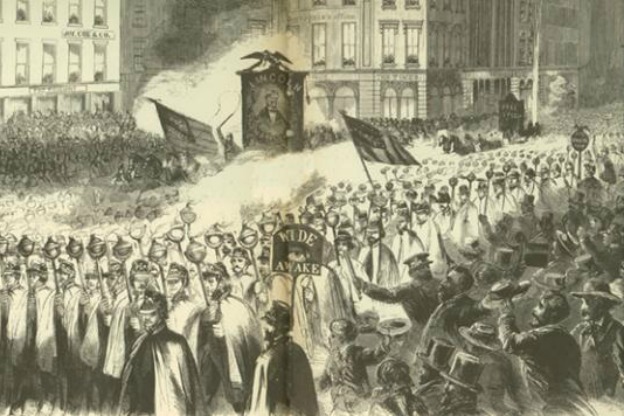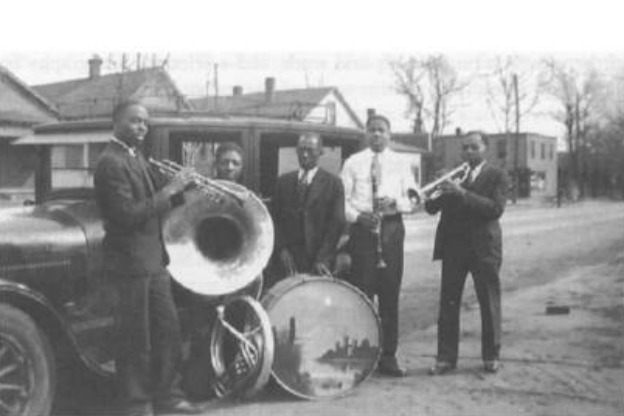 Moment of Indiana History
Moment of Indiana History
Posts tagged Indiana’s African-American history
November 5, 2012

The Election Riot of 1876
Although the violence of the Election Riot of 1876 was not repeated, black voters continued to endure intimidation at the polls.
April 16, 2012

The Hoosier Behind The Jazz Charts
Although his name rarely graced the marquee, Evansville-born composer and arranger Belford “Sinky” Hendricks was a central figure in the jazz world.
October 3, 2011
![]()
Black Women Clubbing for Healthcare Reform
In Indianapolis, the Woman’s Improvement Club worked to manage tuberculosis among the city’s black population, independent of any public funding or assistance.
February 14, 2011
![]()
Frank Beckwith for President
Records are scant about the namesake of a little park in Indianapolis. At one time, however, Frank R. Beckwith gave Richard Nixon a run for the money.
October 11, 2010
![]()
Neighborhood Church, Living Monument
While children learned their letters in the basement, Terre Haute's Allen Chapel was home to another sort of underground activity.
February 8, 2010
![]()
A Portrait of Black Life in a Young State
Records from a small black agricultural community that once flourished in St. Joseph County contradict the image of life under state-sanctioned segregation.
February 1, 2010
![]()
Slavery Before Statehood
A haven for free blacks and runaway slaves by the mid-nineteenth century, Indiana almost legalized slavery at an earlier moment in its history.
December 21, 2009
![]()
Equity on the Hardwood
It took a 6’3” sophomore from Shelbyville and a righteous university president to break down the color line in Big Ten basketball.
August 24, 2009
![]()
National Black Political Convention
In 1972, thousands of members of the African-American community were “Goin’ Back to Indiana” for a groundbreaking political event.











